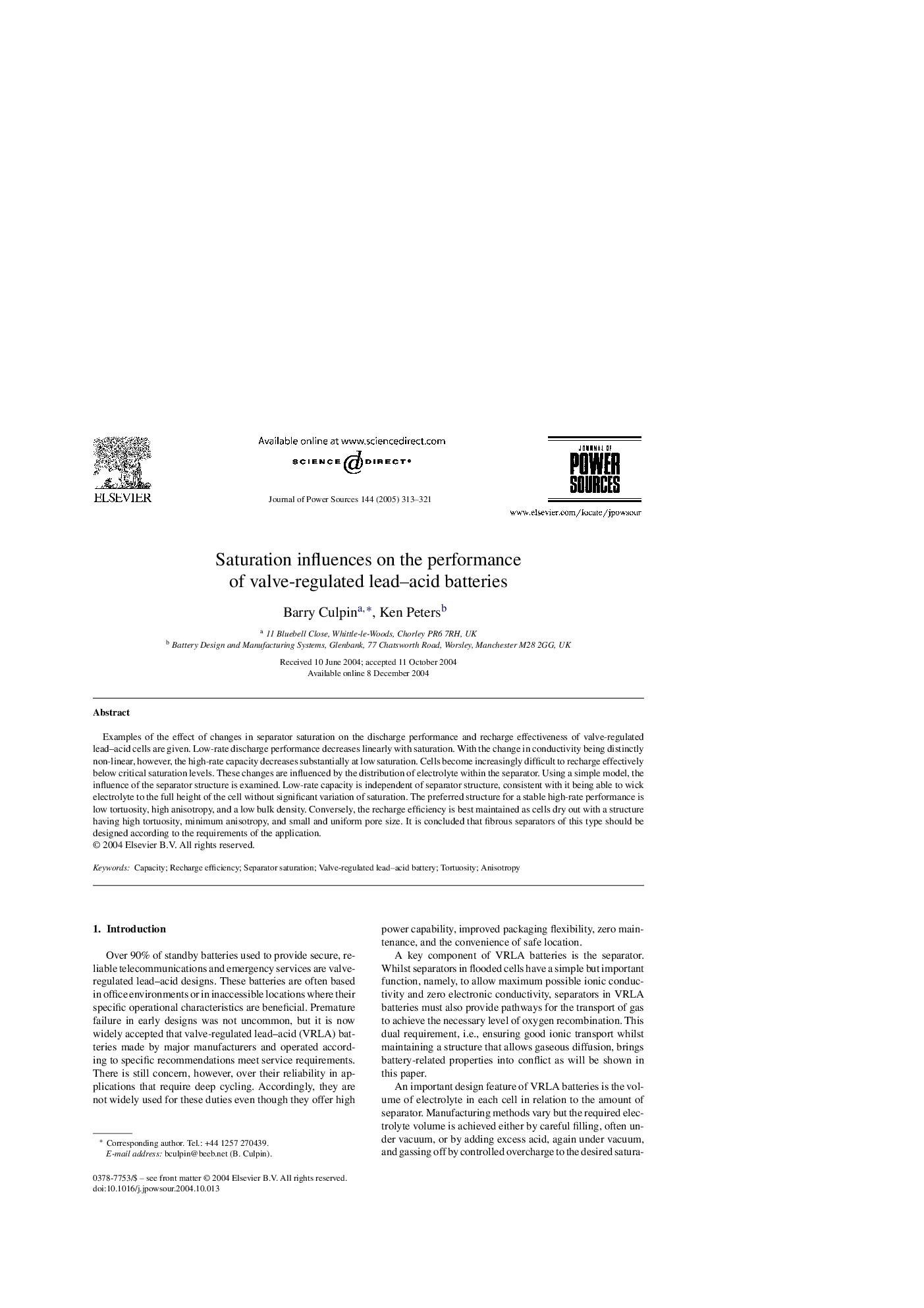| Article ID | Journal | Published Year | Pages | File Type |
|---|---|---|---|---|
| 10568057 | Journal of Power Sources | 2005 | 9 Pages |
Abstract
Examples of the effect of changes in separator saturation on the discharge performance and recharge effectiveness of valve-regulated lead-acid cells are given. Low-rate discharge performance decreases linearly with saturation. With the change in conductivity being distinctly non-linear, however, the high-rate capacity decreases substantially at low saturation. Cells become increasingly difficult to recharge effectively below critical saturation levels. These changes are influenced by the distribution of electrolyte within the separator. Using a simple model, the influence of the separator structure is examined. Low-rate capacity is independent of separator structure, consistent with it being able to wick electrolyte to the full height of the cell without significant variation of saturation. The preferred structure for a stable high-rate performance is low tortuosity, high anisotropy, and a low bulk density. Conversely, the recharge efficiency is best maintained as cells dry out with a structure having high tortuosity, minimum anisotropy, and small and uniform pore size. It is concluded that fibrous separators of this type should be designed according to the requirements of the application.
Related Topics
Physical Sciences and Engineering
Chemistry
Electrochemistry
Authors
Barry Culpin, Ken Peters,
